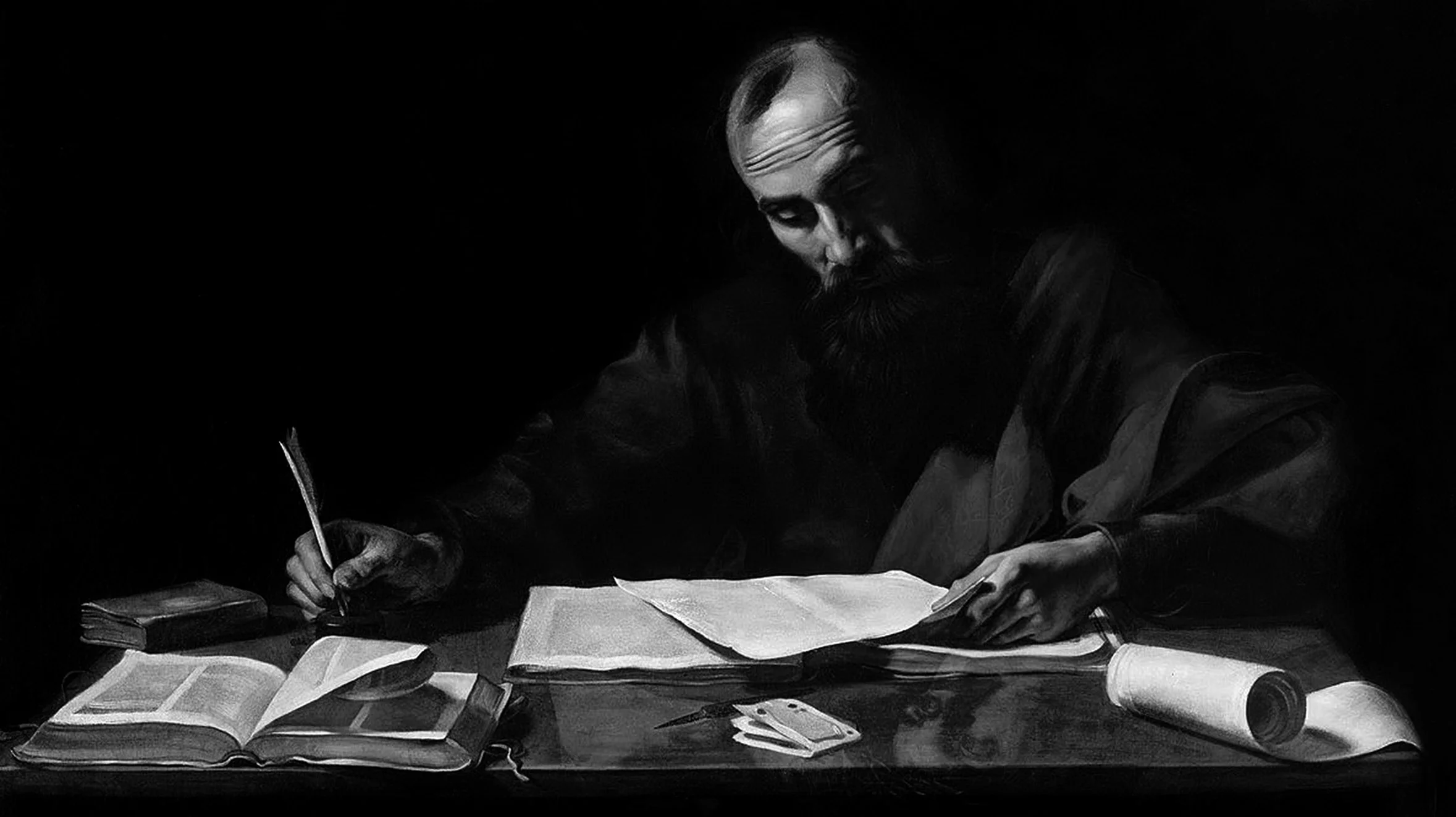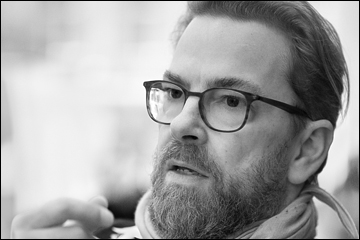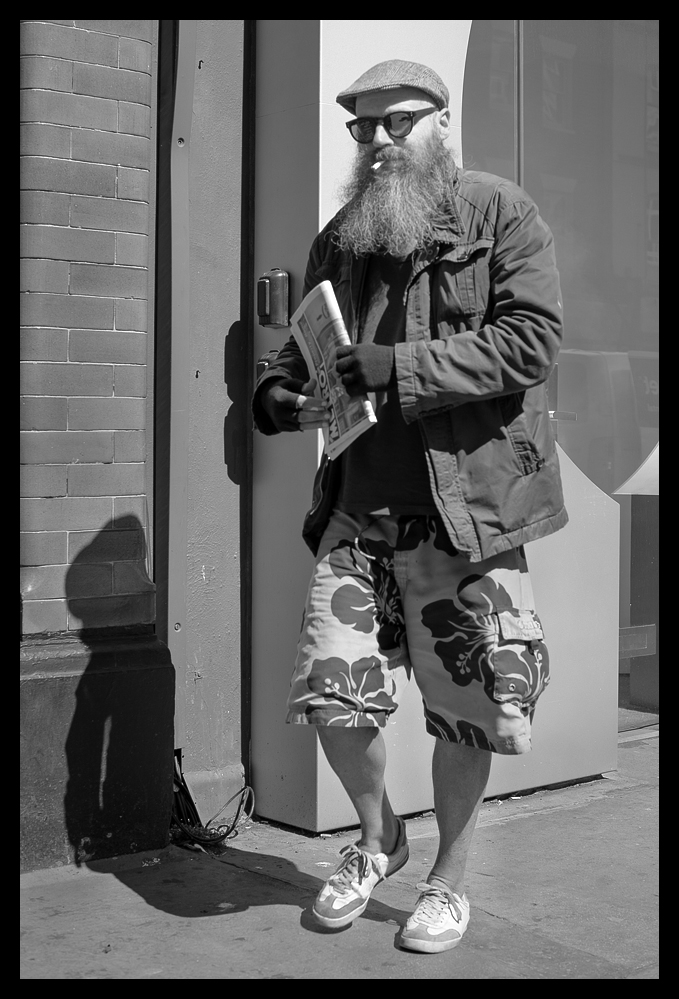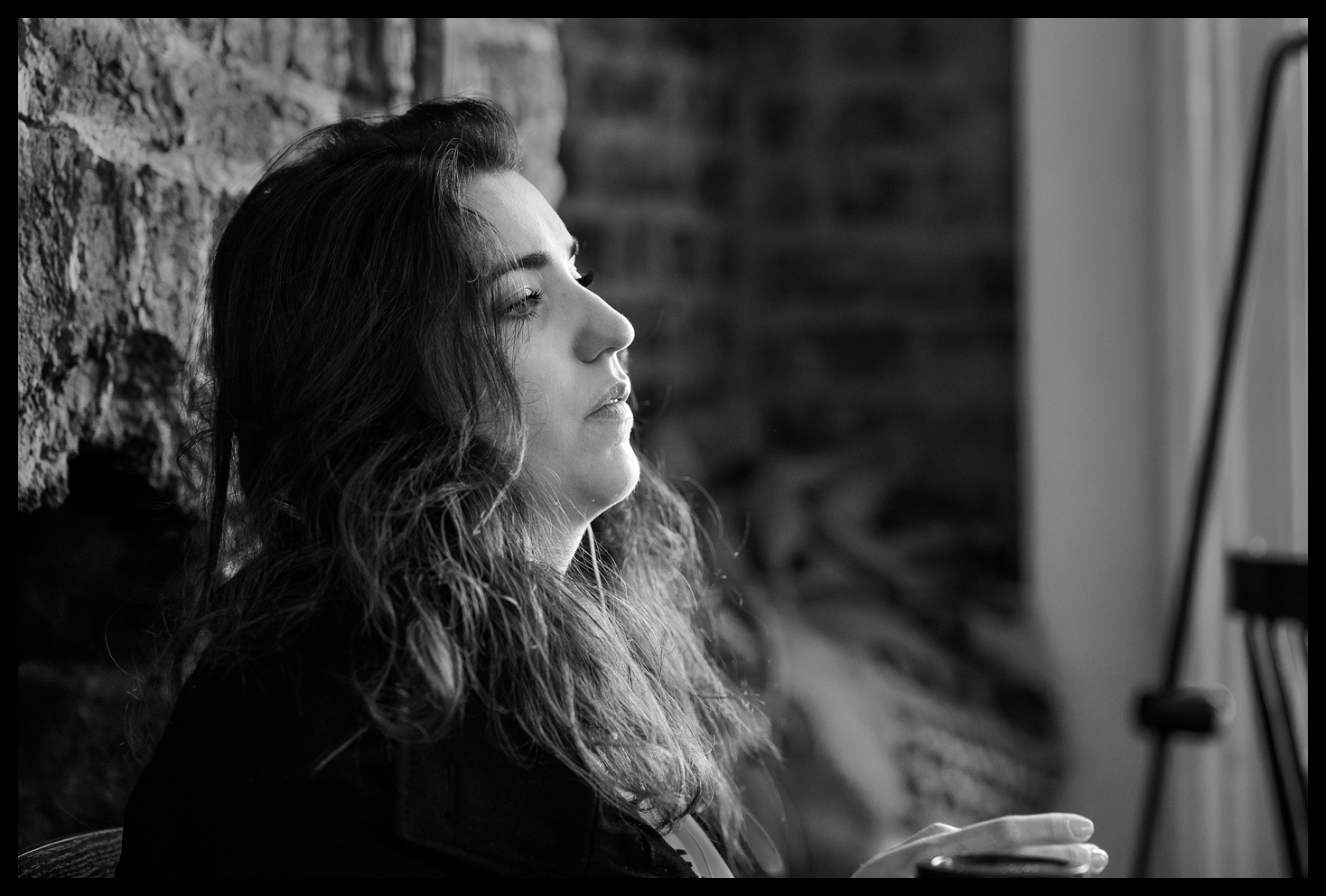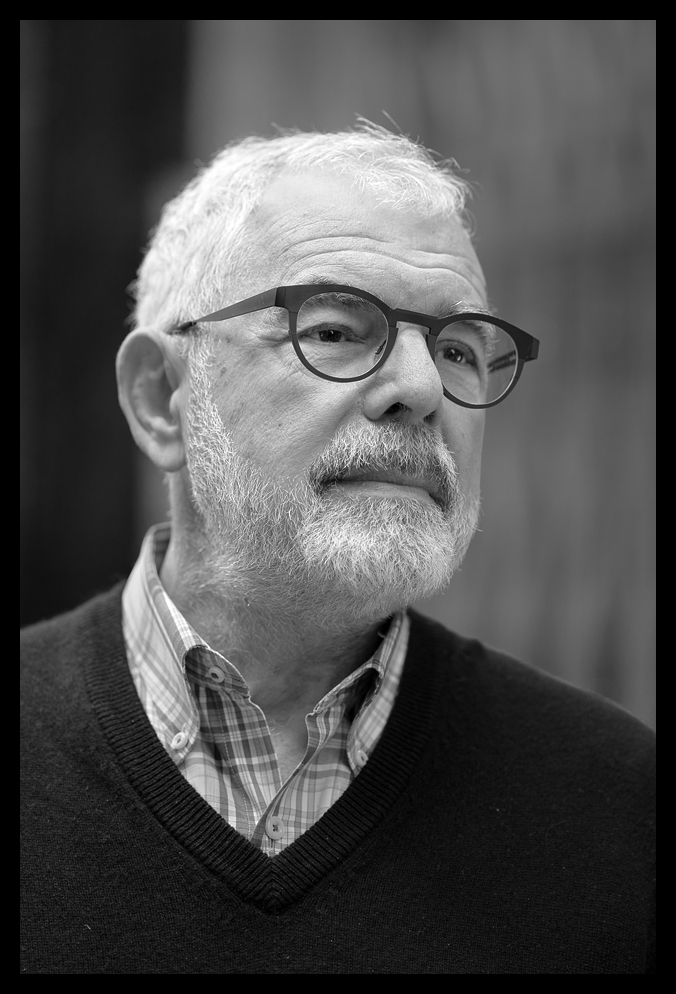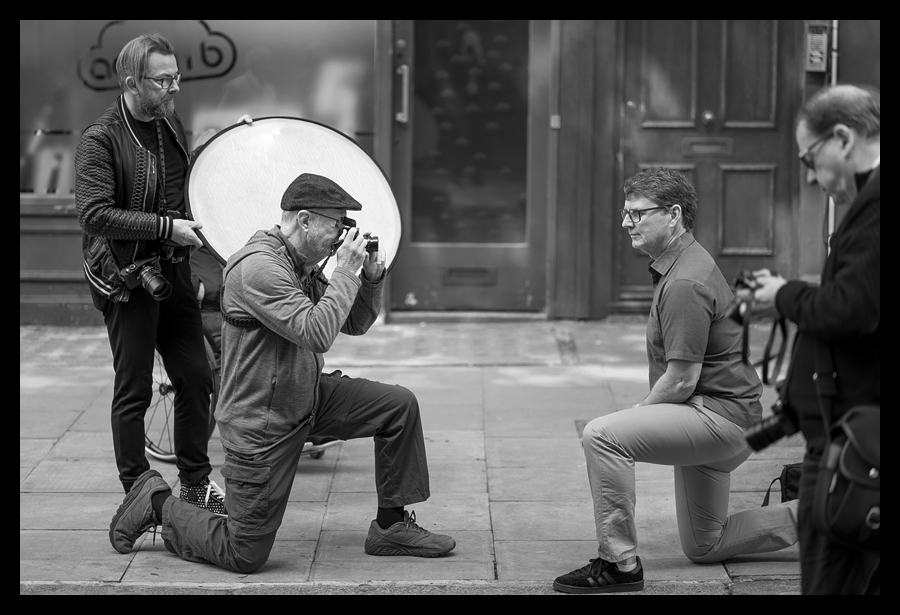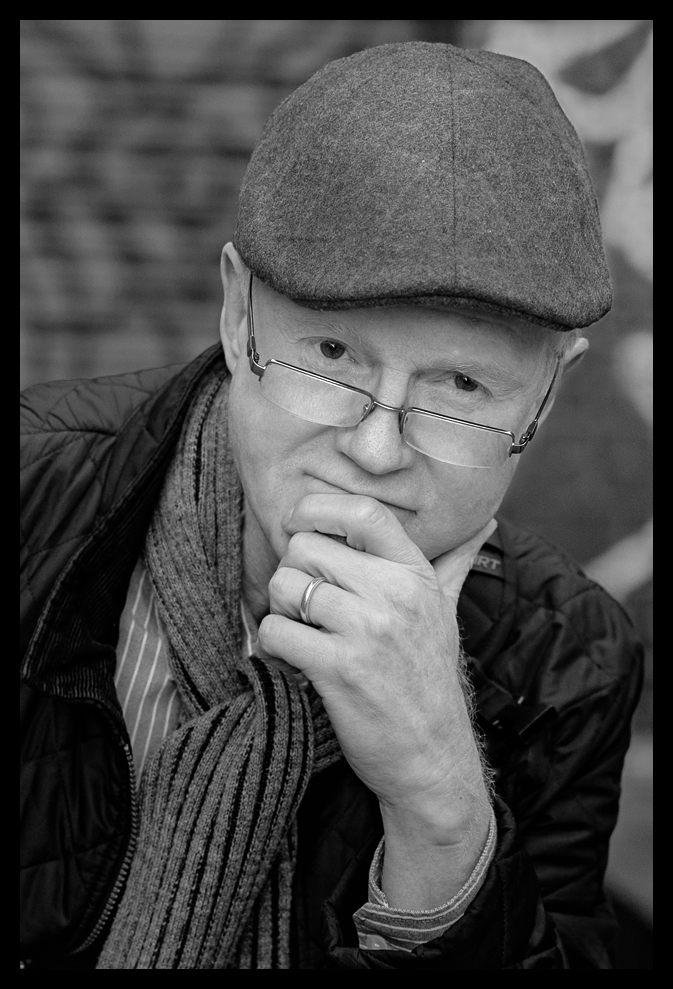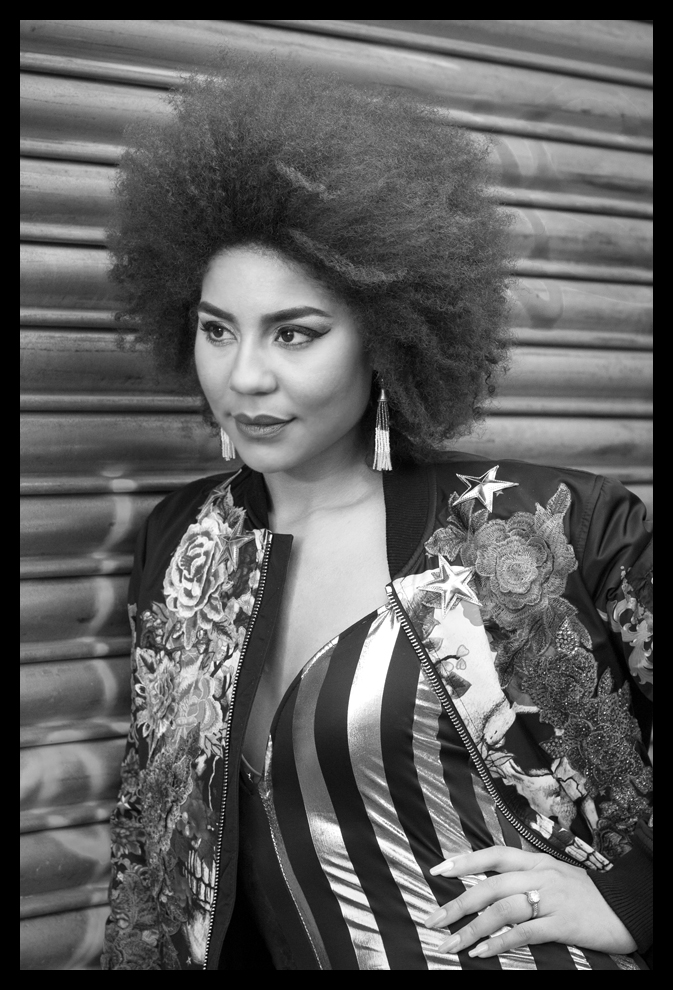Thorsten Overgaard is quite a character. Remarkably straightforward in his views on photography, he is direct and refreshingly uncomplicated when it comes to putting his point across, particularly about the art of portraiture. His catch phrase sums it all up in one, single sentiment........ 'everyone wants to look young, intelligent and sexy ..... and if you don't make the client look good, in their eyes, it doesn't matter how good the lighting is or how sharp the images are, they will never be used or published'. A sobering thought for any aspiring portrait photographer.
overgaard - the man
Thorsten Overgaard - London Photography Masterclass
Born in Aarhus in Denmark in 1965, his early career was spent in developing and publishing hand drawn Comics. That experience led him into editing a Danish magazine, Blitz, and subsequently into the world of advertising. Then, after developing early online businesses, he used his many talents to create his own consulting company, later turning his hand to freelance writing and taking portraits for feature articles in high quality magazines. By 2006 he was concentrating more on photography, specialising in more portrait work for international magazines and eventually for actresses and celebrities such as Seal, Kelly Preston, Anne Archer and for Bill Clinton and members of the Danish Royal Family.
Today, he is one of the most well known, and perhaps also one of the most controversial photographers associated with the world of Leica and one of the first names you encounter online when researching Leica cameras and lenses.
On his website, he has published an extensive series of ebooks, articles and reviews on the art and craft of photography and, in particular, his experiences of using Leica equipment as a working photographer. He has in that process, it would seem, acquired a reputation as a highly successful self-publicist, which, in certain Leica based forums, has led to significant criticism. Despite that, he has succeeded in attracting a sizeable online following. In recent years, he has also been running an extensive series of photography workshops, based in locations all around the globe - usually one or two a week for most months of the year, except July and August. That's where I caught up with him, and his wife, singer and songwriter, Joy Villa; on the London Photography and Portrait Masterclass.
Before I get into detail though, let me first declare that I am a great fan of 'collective experience' workshops. Over the years, I've had the good fortune to enjoy workshops and masterclasses with a number of prominent photographers, some specialising in Landscape, some in Street and now in Portraiture. These sessions have been led by people such as David Ward (Landscape - Scottish Highlands), Mark Littlejohn (Landscape - Cumbria), Eric Kim (Street), Ming Thein (General Photography and Street), Valerie Jardin (Street), Matt Stuart (Street), Richard Kalvar (Street) and now Thorsten Overgaard (Street and Portraiture), so I have a fairly broad range of experience of how workshops compare.
the london photography workshop
The structure of Thorsten's workshops is broadly consistent with that of others I've attended, in that he offers more of a conversational approach rather than formal teaching sessions. Where his differ though, is that Thorsten's dialogues on his approach and recommendations are, in the main, delivered while actually walking the streets, with the group, looking for potential shots or while enjoying the fairly frequent coffee breaks which accompany the walkabout sessions. I have to say, I rather preferred that, as the discussions on lens choice, camera settings, use of available lighting, alternative framing and composition happen while actually engaged in shooting a scene, so they're most relevant at the point of use, and you get to ask questions about the approach while working on the actual shot.
It was a refreshing change. Other tutors typically prefer a group review of their own work as a kick-off to their workshops, followed by working sessions where you are pretty much left to your own efforts, sometimes accompanied by the tutor, sometimes not, with the workshop finishing up with a collective review of a three to five image selection of your and your fellow students efforts. I'm happy to say that Thorsten distinguishes his approach from others'. in that he spends the entire workshop with you as a group, from start to finish, spending time helping individuals whenever they need it, and as the need arises.
The first of the the three day workshop began with coffee at the Charlotte Street Hotel - a meet and greet for the participants and an opportunity for Thorsten to introduce everyone to the program, to review each person's skill level and to set up their cameras for the coming street session. Shortly after that we hit the streets around the hotel looking for photo opportunities and following Thorsten's explanations of the kind of light he was looking for.
While he was talking to the group I noticed this character out of the corner of my eye. He had just stopped to light his cigarette and was walking towards us. I caught him glancing sideways at us, wondering what this shifty looking bunch of photographers were up to.
Thorsten Overgaard's Photography Workshop - Cool Shorts - Leica SL
On our way up to Fitzroy Gardens, I grabbed this shot of this little chap being taken for his 'walkies' - rather reluctantly?
Reluctant Walkies - Leica SL
..... and this shot of a couple of construction workers taking a moment's rest after a long shift.
Long Day! - Leica SL
We continued our walkabout until we reached Fitzroy Garden Square, where Thorsten took the opportunity to show a couple of my fellow participants how to change viewpoint and get right down to it. Love that snazzy jacket of his!
Thorsten Overgaard Showing How its Done in Fitzroy Garden Square - Leica SL
Shortly after that we found Mile 27 - a coffee cafe with some great window light, so we all piled in to see if we could get any window lit shots of customers. I'm was quite pleased with the two shots I managed to get, although they're candid portraits capturing quite different moods.
Thorsten Overgaard's Photography Workshop - Mile 27 Coffee Break - Leica SL
Musing on Life at the Mile 27 Coffee House - Leica SL
While we were listening to Thorsten's explanation of how to capture interior window lit shots, I managed to grab a sneaky portrait shot of Craig, a fellow Leica M10 shooter from LA.
Craig 'Chuck' Norris - Learning about Window Light - Leica SL
The rest of the first day was spent in like fashion, walking through the streets of West London, stopping occasionally for Thorsten to make suggestions of how to find the best light, compose various alternative shots, help some people to correct their camera settings and provide alternate interpretations of the pictorial opportunity.
At the end of the first day, Thorsten directed us to bring our laptops for the following morning's session so we could process the shots we had taken on the first day. So, very comfortably holed up in the Soho Hotel in Richmond Mews, the second day began with Thorsten discussing the use of Lightroom as a good image editing environment, but perhaps more importantly, an excellent image cataloguing system which does its best to help you store, rate, tag and identify large numbers of images so you can quickly find them again in the future. He spent quite some time on the benefits of storing your images this way and discussed the best way of setting up a Lightroom system and how to use the rating and tagging system to best advantage. For those that didn't have it already, Thorsten also provided a copy of his latest Lightroom Survival Kit so that people could study it further, after the workshop.
We spent the afternoon at the hotel working on processing our images from the first day, the objective being to ingest all our shots into Lightroom, curate them down to the best three images, then process the three selected shots so we could share best efforts among the group at the end of the session. Thorsten provided guidance on image processing to all who needed it and hosted the late afternoon review of everyone's work, offering advice and commentary on all the finished images.
Hot Tip - Leica SL
The final day of the workshop began with another walkabout morning session. This time the emphasis was on describing and searching for the best light for street portraits. Curiously, the best light is not what you would immediately think of, in that the last thing you want is bright, highly directional sunlight straight onto a subject's face. This causes unwanted harsh shadows that are very difficult to deal with and unmanageable differences in the amount of light that hits the face in the bright spots versus the darker shadow areas. What's needed is a more even, soft light, which flatters the subject and softens the lines and 'ageing' the camera would otherwise record in harsher sunlight.
Below you can see the result of a little experiment; The portrait was shot in very even light, straight on into the camera. It was shot with a Leica SL fitted with a Leitz 80mm f1.4 Summilux R Lens> The lens dates from the mid 90s - it was used wide open at f1.4 and you can see it's characteristically flattering treatment of the subject and the creamy bokeh it gives.
I also edited the image in Photoshop to remove the harshest lines and blemishes to peel off a few 'years' - in keeping with the spirit of the treatment. The image below that was taken with the same Leica SL, but fitted this time with the very latest Leica 90mm f2 Summicron SL lens shot at f2.2. Naturally, there are differences, but it shows that choice of lens and post processing can make for an entirely different result, depending on the kind of treatment you're looking to produce.
Looking Stoic but with Compassion - Leica SL with 80mm Summilux R Lens
Peter Cook Looking Majestic - Leica SL with Leica 90mm F2 Summicron SL Lens
Thorsten spent a lot of time talking us through how to find the best natural lighting, using the back of his hands to show how differently the hand looks when you change its angle to the light, revealing more or less texture and lines in the skin depending upon how acute the lighting angle is. He then showed everyone how to set their camera's exposure and white balance for best results using a light meter and grey card, and how to use a soft diffuser to reflect and fill in shadows with additional light to even out the exposure while retaining some 'character' and modelling in the subject's face.
Modelling for the Team - Leica SL
This session wasn't all about the lighting though. Thorsten spent the rest of the session directing the model (using the course participants, in turn, to model for the others) and talking through how to put the subject at ease and also how to position and direct their pose and expression, while still concentrating on composition and viewpoint to get the best shot.
Thorsten explaining the Finer Points - Leica SL
The last afternoon was spent in the Soho Hotel again, importing, rating, curating and processing the images from the morning session, followed by a last group review of everyone's best portraits of the day.
the portrait workshop
For those who participated on the main workshop, the portrait masterclass is a two day extension, but it's also possible for participants to join the workshop as a stand alone course. The two day course offers a deeper dive into the outline provided on the third day of the main photography workshop, so there is a little repetition, but that's a good thing, in that you have a chance to cover some of the scenarios twice and that helps to reinforce your understanding.
The first of the two days began in a similar way. First we met at the Charlotte Street Hotel to introduce the new participants and to drop off our laptops. After coffee, we searched for suitable light in the local streets and took turns as models for the other course members when it was their turn to photograph the 'model'. Thorsten again gave instruction on camera settings; the best way to read light levels on the subject's face (with a Sekonic incident light meter) and showed the best way to measure and set a camera's white balance using a grey card reading. He spent a long time discussing and demonstrating how to find the soft lighting source described above and how to use a collapsible, multi-surface reflector / diffuser to fill in shadow detail and reduce contrast while retaining as much modelling in the subject's face as appropriate for their skin type and facial features.
Thorsten Overgaard Discussing the Best Lighting for Portraits - Leica SL
Thorsten thinks of a portrait, not as just a picture, but as more of an intimate conversation - but without words. He says that once you have the technical aspects covered, making a great portrait is mostly about how comfortable and 'present' the subject feels and how relaxed and natural their expression. You're are trying to get to a point where the subject looks confident and approachable, comfortable and engaging or at least, engaged and in the moment.
Thorsten acknowledges that while subjects can look awkward and distant at the beginning of a session, if you direct them with confidence while you build the relationship, for each shot there will be at least one, albeit brief, moment when the person 'opens up' - and that's when you have to take the photo. Of course, you have to be able to recognise that moment and that's where the practice comes in. The more portraits you shoot, the better you get at recognising that moment. You're not trying to represent that person as merely an art object, but as a character with 'life' and 'personality'.
Being the subject for the other photographers is an eye-opener as well. When you pose for your associates, you can see where they might be going wrong. They can be reluctant to direct you at the beginning, preferring to adjust their position rather than direct your position, pose, expression and direction of gaze - all of which contribute to the final look. To help you with all of this Thorsten distills his advice into straightforward, instructional tips that just make sense. He shows you, guides you, even positions you, the model and the lighting until the 'magic' begins to happen. It is most certainly an art.
The image below was taken of me by Craig 'Chuck' Norris, a fellow student on the workshop, while i was taking my turn as the subject. He took this as a colour shot with his Leica M10 and a Leica 50mm f2 ASPH lens. He very kindly sent me the RAW file for this image and I did the monochrome conversion and final processing. I think he did a great job with the shot, and it's one I've already used, with Craig's permission of course.
Learning To Be The Subject - A Rare Moment In Front of the Lens - Leica M10
In the final session I could see Thorsten's advice producing great results. All the participants were beginning to apply his advice and you could see the change in everyone's set of three final images, which were presented to the group in the last session. My favourites were the three images below, where I think I managed to capture more of the 'character' of the subject, rather than just a literal snapshot, but you would be the best judge of that! My thanks go out to Hugo for his enormous patience and to especially to Joy for her very professional modelling.
Hugo Rodriguez de Miguel - Deep in Thought - Leica SL
Hugo Rodriguez de Miguel - Calmly Relaxed - Leica SL
Finally, probably my favourite shot of the entire workshop - a street portrait of Joy Villa, Thorsten's wife. I chose to shoot her with the Leica SL fitted with the twenty five year old famous Leitz 80mm f1.4 Summilux R Lens. The example I showed above presents a much softer overall look when set wide open, but this time I used an f5.6 aperture and was agreeably surprised at how sharp this venerable lens is when stopped down.
'Princess' Joy Villa - Leica SL fitted with Leitz 80mm f1.4 Summilux R Lens at f5.6
So, according to Thorsten then, how do you know a good portrait when you see one? Well, he says the best guide is that if it's really 'good', the person will use it - on LinkedIn, Facebook, Instagram etc and maybe even have it printed for their family, home or office. He reminds us that a portrait is not just a technical exercise - it's an important personal document - for that person, in the service of that person and it's something they will be proud of. Who could argue with that?
Update - I posted a link to this article on a well known Leica based forum and encountered a significant amount of criticism related to Thorsten's other marketing activities and other aspects of his life choices. I have to say I was shocked at some of the contributor's comments, not all of which were worthy additions to the discussion. There was lively debate on the pricing of his workshops and some made the comment that they could have made better use of the money. I made no comment on Thorsten's prices or on the perceived value for money he offers. However, you should be able to tell from the tone of this article that I enjoyed the 'experience' of both workshops. As always, your mileage may vary.
If you like what you've read in this article, please take a moment to click the 'Like' button below.
